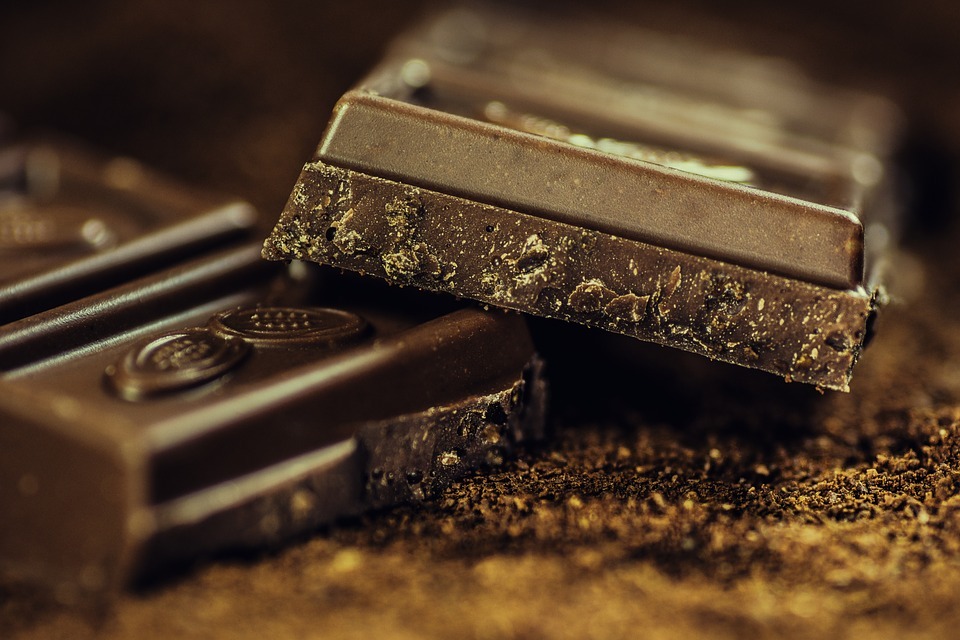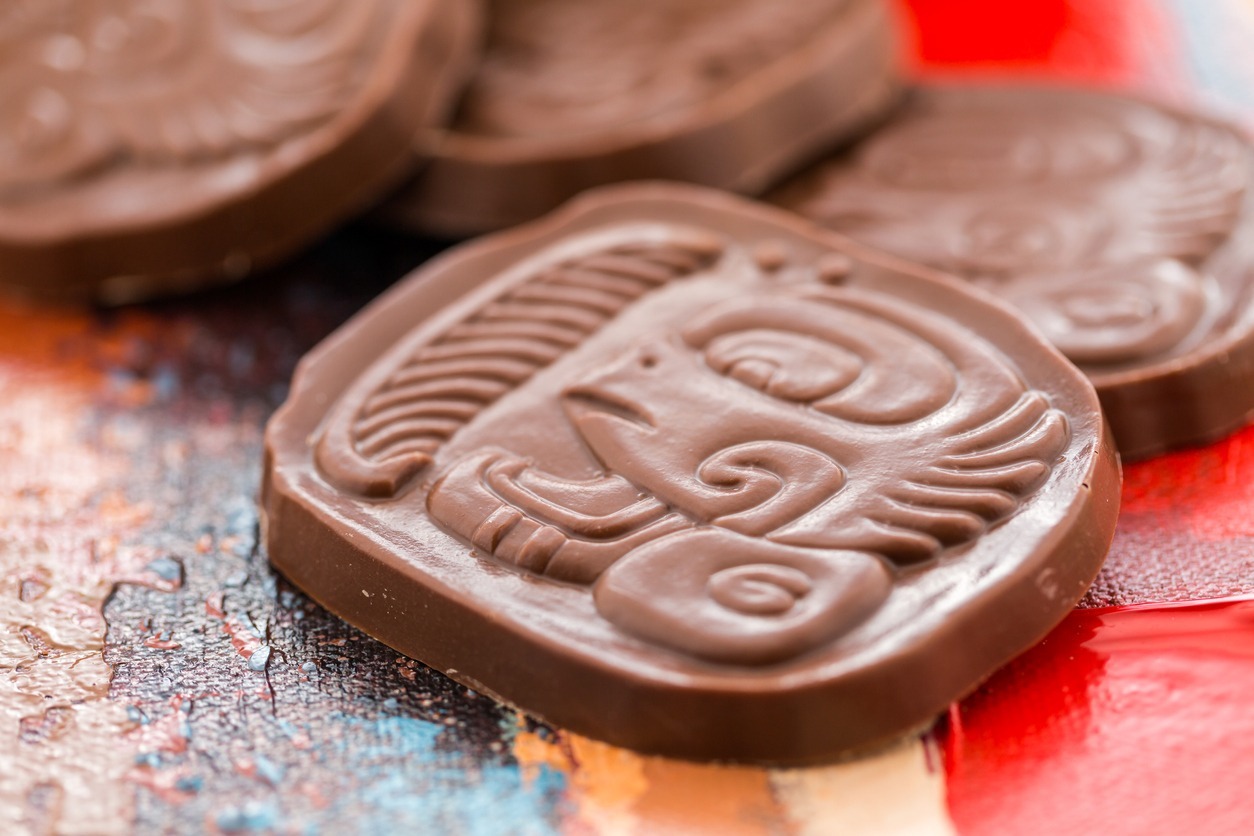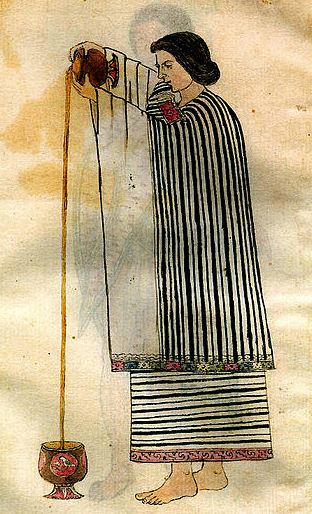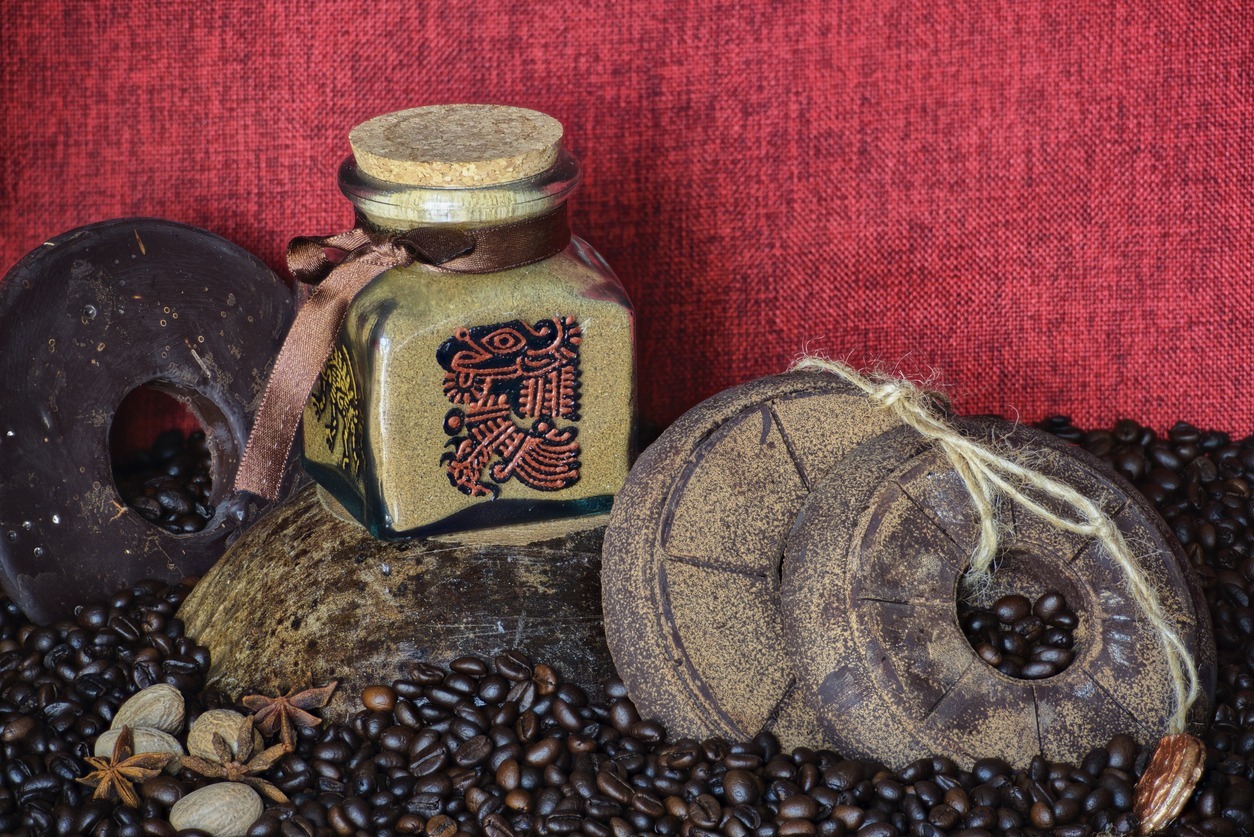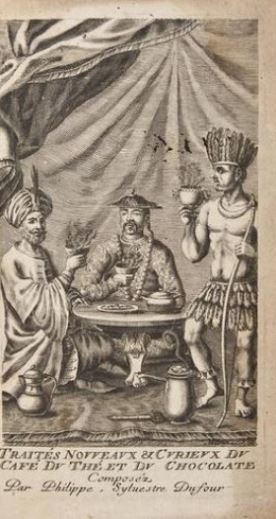Many people love chocolate. It is a sweet, brown food made from roasted and ground cacao seeds in the form of a liquid paste or a block. It is a great snack or drink, and it can be used as a flavoring to other foods as well. Aside from that, chocolate is also given as a gift on special occasions, especially on Valentine’s Day.
Today, there are many different brands and types of chocolates you can buy. But have you ever wondered how it was first created? While you’re eating your favorite chocolate, have you ever thought about who was the first one to make this sweet treat that everyone loves?
If you’re also wondering about the origins of chocolate, you’re in the right place.
Olmec Chocolate
The fruit of cacao trees is used in making chocolate. This tree is native to Central and South America. Its fruits are called pods, and each of these pods has about 40 cacao beans inside. Cacao beans are dried and roasted to make some cocoa beans. There’s no clear story on who invented cacao and when it came into the scene.
Based on the curator of the cultural arts for the Smithsonian’s National Museum of the American Indian named Hayes Lavic, ancient Olmec pots, and vessels from around 1500 B.C. were discovered with traces of theobromine which is a stimulant compound that can be found in tea and chocolate. This is the earliest evidence of domestication of the cacao plant.
It is thought that cacao was used by the Olmecs to create a ceremonial drink or as a medicinal drink. But since there’s no written history about it, there are different opinions on whether they used cacao beans in their concoctions or just used the cacao pod’s pulp. There’s also no recipe for personal use, and only a little evidence remains of how the beverage was processed.
The Olmecs are our original chocolatiers, and we have linguistic and archeological evidence linking down to cacao cultivation at least as far back as 1000 B.C. They drink it as a bitter beverage rather than the solid sweet we eat today.
Mayan Chocolate
The cacao knowledge of the Olmecs was passed on to the Central American Mayans. Aside from consuming chocolate, they also honored it. According to the written history about the Mayan culture, they used chocolate drinks in celebrations and as well as to finalize important transactions. Even though chocolate is important in the Mayan culture, it was not exclusive for the wealthy and powerful because it’s readily available for everyone.
Many Mayan households enjoyed chocolate with every meal. Their chocolate was thick and foamy and was often mixed with chili peppers, water, or honey.
How Did These Ancient People Turn This into Their Favorite Chocolate Beverage?
source:AnonymousUnknown author, Public domain, via Wikimedia Commons
First, they would ferment, sundry, and then roast and deshell the cacao beans, leaving them with a nib that was then ground and melted into something called chocolate liquor. It tasted like extremely bitter dark chocolate. Mix it up with some honey, vanilla, or even chilies, and you got yourself a traditional Mesoamerican cacao drink. They especially loved the froth that would settle on top of this drink and would even pour it from one cup to another from a standing height to get as much froth as possible on top.
Cacao Beans Were Used as Currency
Long-distance trade routes sprang up across the area connecting growers with cacao consumers. Cacao soon became a central part of Mesoamerican ceremonies, especially weddings.
It was so valued that it was used as a currency throughout the region, eventually inspiring counterfeiters that molded fake beans out of clay or carved avocado seeds. To give you an idea of how much these beans were worth, you could buy an avocado for one bean, a slave for 100 beans, and a sweet jet ski with sick flames on the side for 9,000 beans.
So, every time an Olmec, Mayan, or Aztec drank a cup of chocolate, they were essentially drinking money. Like lighting a cigar with a 100 Euro note.
The Aztecs, on the other hand, took their admiration for the chocolate to another level because they believed that cacao was given to them by their gods. They also enjoyed hot or cold, spiced chocolate beverages like the Mayans, but they also used cacao beans as currency to purchase foods and other goods. Cacao beans were considered more valuable than gold in the Aztec culture.
In their culture, chocolate was mostly an upper-class extravagance. But the lower classes also enjoyed them at weddings or other celebrations. The mighty Aztec ruler, Montezuma II, was the most notorious Aztec chocolate lover of all because he supposedly drank gallons of chocolate each day for energy and as an aphrodisiac. He also reserved some cacao beans for his military.
Chocolate in Europe
Even though there are conflicting reports on when chocolate arrived in Europe, it is agreed that it first arrived in Spain. According to one story, Christopher Columbus was the one who discovered cacao beans after stopping a trade ship on a journey to America. In 1502, he brought the beans back to Spain with him.
There’s also another tale that Hernan Cortes, a Spanish conquistador, was introduced to chocolate by the Aztecs of Montezuma’s court. When he returned to Spain, cacao beans in haul, he allegedly kept his chocolate knowledge a well-guarded secret. Aside from those stories, there’s also another tale that friars who presented Guatemalan Mayans to Philip II of Spain also brought some cacao beans along as a gift in 1544.
View this post on Instagram
Europeans’ Initial Reaction to the Chocolate
Europeans’ initial reaction to chocolate was rather bad. One famous example is Girolamo Benzoni, who was repeatedly offered a drink by the natives while traveling in Central America, and every single time he would vehemently reject it. Calling it a drink for pigs and perplexed at why the natives would walk away laughing when he did so. After running out of wine, he was forced to try it and discovered that he loved it. Like Benzoni, the Spanish conquistadors turned colonists and grew to like chocolate.
No one is sure about how chocolate got to Spain, but by the late 1500s, it became a much-loved indulgence by the Spanish court. With this, in 1585, Spain began importing chocolate. Currently, it is important to note that nearly all Spanish in New Spain were men. So, they had to marry and rely on native women that would cook for them and their new children traditional Aztec and Mayan foods. This mixing would create a brand-new mestizo culture that drank chocolate.
Eventually, other European countries such as France and Italy visited parts of Central America and learned about cacao. They brought chocolate back to their respective countries. Chocolate mania soon spread throughout Europe. There was a high demand for chocolate; that’s why chocolate plantations came where thousands of slaves worked.
Spread Across Europe
source: Philippe_Sylvestre_Dufour_17th_century, Public domain, via Wikimedia Commons
At that time, a new society was emerging soon be influential as chocolate drinkers arrived on the scene. These were Christian missionaries, and most importantly, the Jesuits. In their work trying to convert the natives, these missionaries were plied full of chocolate and soon realized how lucrative it might be a trade item. Once the New Warders, missionaries, and merchants started crisscrossing the Atlantic with their new chocolate habits and gifting chocolate to their princes and popes, the European Spanish eventually shed their apprehension and tried the beverage.
Chocolate rarely crossed the Atlantic until the 1590s. However, by the 1620s, millions of pounds of it were being imported into Spain. And so chocolate spread upwards from pagan to missionary, from coerced wives to conquistador husbands, all the way until it reached the lips of the kings and queens.
Origin of the Word “Chocolate.”
While this beverage was crossing cultural barriers, the word chocolate itself was crossing linguistic ones. Early Spanish sources call chocolate “cacahuatl,” an Aztec word for cacao-water. The Spanish eventually combined the Mayan word for hot “chocol” and the Aztec word for water “atl” together to form chocolatl, which eventually became chocolate. Which is now used worldwide.
The traditional Aztec chocolate drink recipe did not satisfy the taste of Europeans; that’s why they made their varieties of hot chocolate, adding cane sugar, cinnamon, and other spices and flavorings. In the long run, fashionable chocolate houses for the rich cropped up throughout Amsterdam, London, and other European cities.
View this post on Instagram
Chocolate in America
In 1641, chocolate arrived in Florida on a Spanish ship. In 1682, the first American chocolate house opened in Boston. Cocoa beans were a major American colony import, and chocolate was enjoyed by people of all classes by 1773.
Chocolate was provided to the military as rations, and they are sometimes given to soldiers as payment instead of money during the Revolutionary War and as well as during World War II. Well, today, none of us might settle for a chocolate paycheck, but cacao bean is still a powerful economic force. Did you know that chocolate manufacturing is more than 4-billion-dollar industry in the United States? Yes, and the average American eats at least half a pound of chocolate per month.
Creation of Cacao Powder
When chocolate was introduced in Europe, only rich people could enjoy it. But a Dutch chemist named Coenraad Johannes van Houten discovered a way to make powdered chocolate in 1828 by treating cacao beans with alkaline salts, which were easier to mix with water. The chocolate produced was called cacao powder or Dutch cocoa through the process named Dutch processing.
It is also believed that van Houten invented the cocoa press, but some say his father was the one who invented the machine. This machine separated cocoa butter from roasted cocoa beans to make cocoa powder easily and less expensive. The cocoa press was used to create a wide variety of delicious chocolate products.
Dutch processing and the invention of the cocoa press helped make chocolate affordable for everyone. These also opened the door to mass-producing chocolate.
Nestle Chocolate
In the 19th century, chocolate was mainly enjoyed as a drink, and milk was usually added to it instead of water. But in 1847, the first chocolate bar was made by British chocolatier J.S. Fry and Sons. It was made by molding a paste made of sugar, chocolate liquor, and cocoa butter.
In 1876, dried milk powder was added to chocolate to create milk chocolate, and this was done by Daniel Peter, a Swiss chocolatier. After several years, he worked with his friend Henri Nestle, and they made the Nestle Company which brought milk chocolate to the mass market.
There were many improvements in making chocolate during the 19th century. However, it was still hard and difficult to chew. This is why Rudolf Lindt, a Swiss chocolatier, invented the conching machine. This machine mixed and aerated chocolate, giving it a smooth consistency that blended well with other ingredients. It also made chocolate melt-in-your-mouth.
By the early 20th century, many family chocolate companies such as Nestle, Hershey’s, Cadbury, and Mars were mass-producing different kinds of chocolate confectionaries to meet the increasing demand for a sweet treat.
Chocolate in the Present Time
Today, most of the chocolate we can buy is highly refined and mass-produced. But there are still some chocolatiers who create chocolates by hand, and they keep their ingredients pure. It is still available to drink, but we enjoy it most of the time as an edible confection or in desserts and baked goods like cakes and bread.
It’s amazing to know that chocolate was invented thousands of years ago, but we are still enjoying it today. A chocolate bar is one of the best candy snacks that people love.

